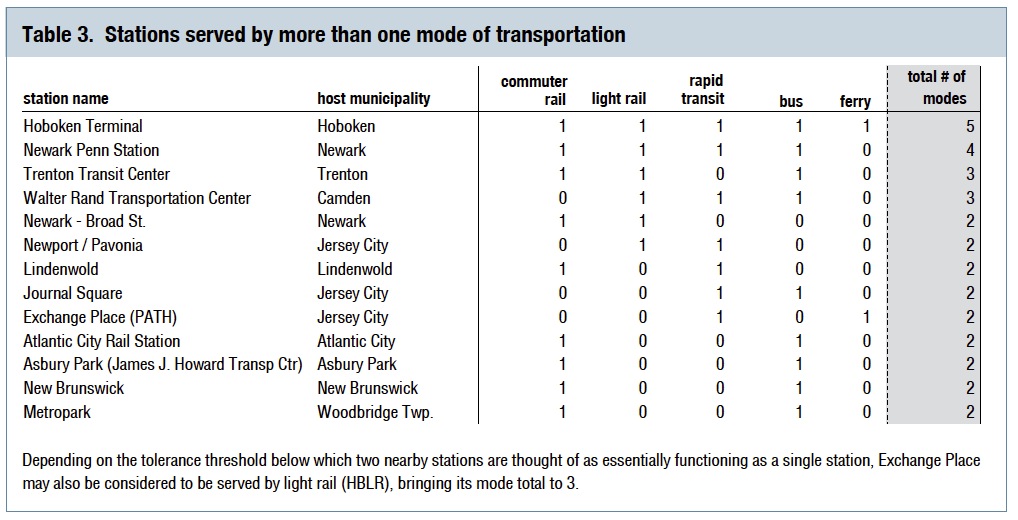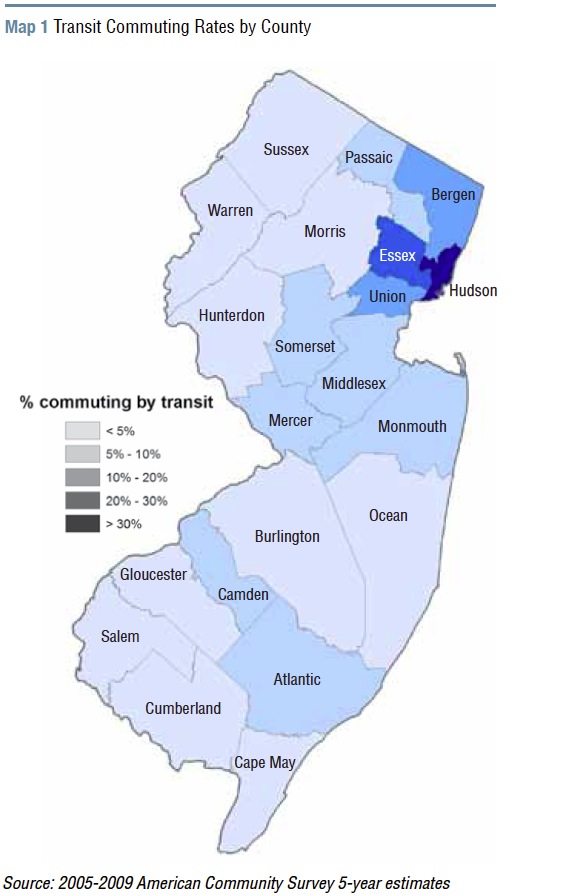Executive Summary
New Jersey is in possession of a valuable resource: one of the most extensive public transportation systems in the country, an artifact of a transportation past that pre-dates the Interstate Highway System and the omnipresence of the automobile. The legacy bequeathed by this resource is a rate of transit commuting that is second highest among the 50 states. Transit ridership creates many societal, economic, and personal benefits: for example, reducing congestion on the state’s roads; alleviating the emission of pollutants and greenhouse gases; reducing the need for vehicle ownership; and freeing up commuters’ time for other uses (reading, sleeping, etc.) rather than having to pay attention to the road. In general, transit creates efficiencies and reduces the per-capita impact of the transportation system by allowing multiple travelers to share the ride.
If increasing transit ridership is a desirable goal, then an intermediate goal must be to improve access to transit. The more activity centers (homes, stores, workplaces) are clustered near the transit system, the more people will be able to use transit for some of their daily activities. Transit-oriented development (TOD) is a term used to describe a development pattern that concentrates activity centers near transit stations and fosters the kinds of pedestrian connectivity and amenities that help translate that physical proximity into actual foot traffic and transit use.
The transportation community, policy leaders within New Jersey state government, local officials, and private real estate developers have all embraced TOD to varying degrees. But not all TOD is necessarily equal; some transit station areas may be particularly well suited to one type of development (office, retail, residential, parking) but not to others. The unique characteristics of each individual station area can inform decisions about what kind of development should be encouraged at what locations.
Thus far, the determination of which stations are appropriate for which type of development has largely been an ad-hoc, opportunity-driven process rather than a systematic one. A comprehensive and objective assessment of conditions around all of New Jersey’s transit stations would help identify those stations that pose the greatest opportunities for TOD in general, and for which variety of TOD. This in turn will help to direct limited public and private investments more efficiently and strategically.
The purpose of this report is to present and describe an analytic tool for prioritizing TOD investments that has been developed by New Jersey Future: an inventory of the state’s transit stations, populated with key data items pertaining to each station and the area surrounding it. The report will also provide examples of the kinds of questions that can be answered with results generated from the inventory. From such a tool for quantitatively assessing and ranking transit stations and their host neighborhoods, a systematic, targeted TOD promotion strategy might evolve.
 Download full report (PDF): Targeting Transit: Assessing Development Opportunities Around New Jersey’s Transit Stations
Download full report (PDF): Targeting Transit: Assessing Development Opportunities Around New Jersey’s Transit Stations
About New Jersey Future
www.njfuture.org
“New Jersey Future is a nonprofit, nonpartisan organization that brings together concerned citizens and leaders to promote responsible land-use policies. The organization employs original research, analysis and advocacy to build coalitions and drive land-use policies that help revitalize cities and towns, protect natural lands and farms, provide more transportation choices beyond cars, expand access to safe and affordable neighborhoods and fuel a prosperous economy.”







 RSS Feed
RSS Feed